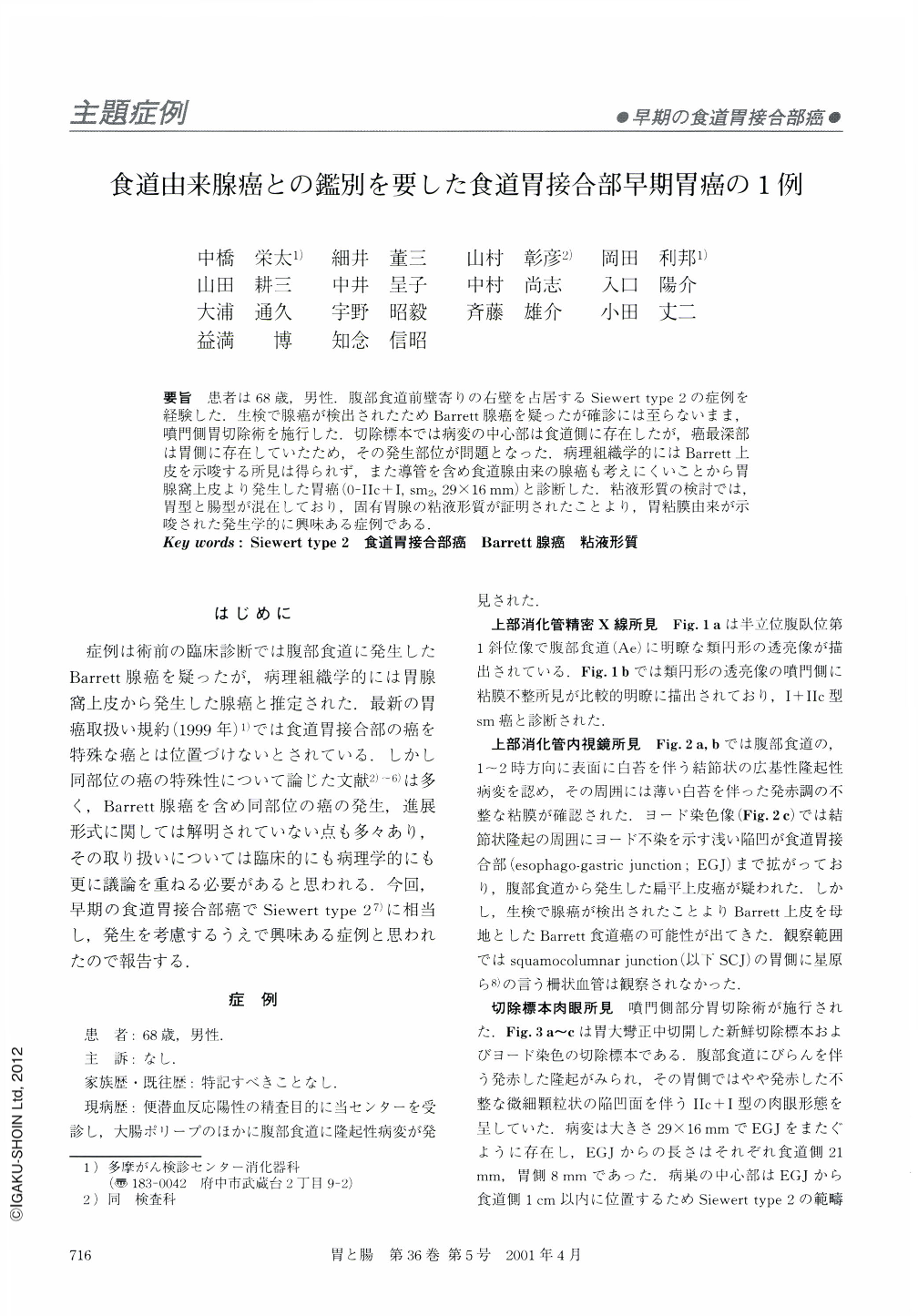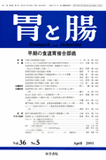Japanese
English
- 有料閲覧
- Abstract 文献概要
- 1ページ目 Look Inside
- サイト内被引用 Cited by
要旨 患者は68歳,男性.腹部食道前壁寄りの右壁を占居するSiewert type 2の症例を経験した.生検で腺癌が検出されたためBarrett腺癌を疑ったが確診には至らないまま,噴門側胃切除術を施行した.切除標本では病変の中心部は食道側に存在したが,癌最深部は胃側に存在していたため,その発生部位が問題となった.病理組織学的にはBarrett上皮を示唆する所見は得られず,また導管を含め食道腺由来の腺癌も考えにくいことから胃腺窩上皮より発生した胃癌(0-Ⅱc+Ⅰ,sm2,29×16mm)と診断した.粘液形質の検討では,胃型と腸型が混在しており,固有胃腺の粘液形質が証明されたことより,胃粘膜由来が示唆された発生学的に興味ある症例である.
A case of a 68-year-old man. We encountered a case corresponding to Siewert type 2 cancer spreading from the anterior to the posterior wall. Furthermore, since histologic studies on endoscopic bite specimens revealed adenocarcinoma, Barrett adenocarcinoma was suspected. We did not have enough data to make a definite diagnosis, so, gastrocardiectomy was carried out. On the resected specimens, the center of the lesion was situated inside the esophagus while the deepest portion involved the origin of the cancer. The mucous membrane neighbouring the cancer itself was well scrutinized histologically, and it was judged almost unthinkable that the adenocarcinoma had originated from the esophagus along with Barrett's epithelium. Therefore, the lesion was eventually judged to have originated from gastric foveolar epithelium, that is, stomach cancer, Type 0-Ⅱc+Ⅰ, sm2, 29 × 16 mm.
Furthermore, the studies of mucin phenotype revealed a mixture of gastric and intestinal phenotype. We found it hard to identify which portion of the lesion involved the origin of the cancer.

Copyright © 2001, Igaku-Shoin Ltd. All rights reserved.


